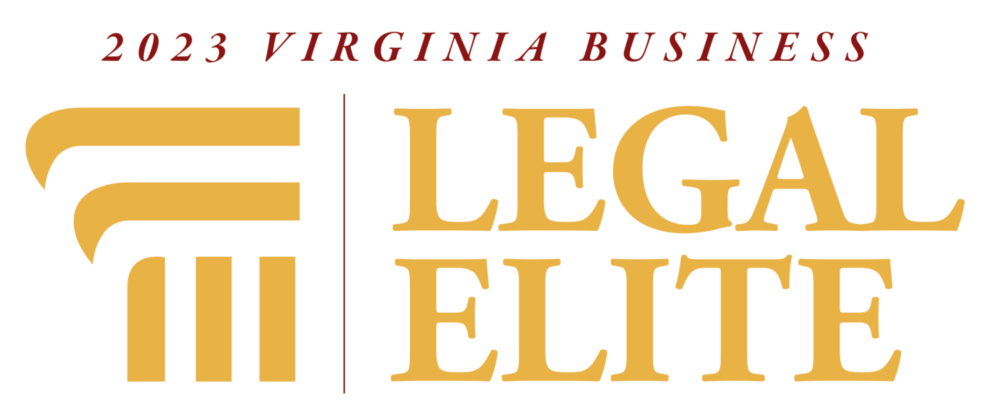November 4, 2016 – Article
BNA’s Patent, Trademark & Copyright Journal
An article by Chico Gholz and Marc Weinstein was recently published in the BNA’s Patent, Trademark & Copyright Journal
BY CHARLES L. GHOLZ AND MARC K. WEINSTEIN
A recurrent mystery to those of us who make or have made our livings practicing interference law is why we see issues that look like plain vanilla interference issues being decided by what Judge Kera (with his thick Brooklyn accent) used to call ‘‘amachoors’’ (i.e., Article III district court judges) in proceedings illadapted for the purpose.
The senior author of this article has written on this subject twice before (Gholz, Don’t Forget That Inventorship Issues Can Be Determined in an Interference!, 85 PTCJ 115 (2012), and Gholz, Why Wasn’t In re Hubbell Hubbell v. Hubbell?, 20 Intellectual Property Today No. 6 at page 19 (2013)). Today we are back at it again.
Charles L. Gholz is senior counsel in Oblon, McClelland, Maier & Neustadt LLP in Alexandria, Va. He can be reached at (703) 412-6485 or cgholz@oblon.com.
The views expressed herein are those of the authors and are not necessarily shared by their employer or its clients.
The Facts in Vapor Point
By the time it got to the Federal Circuit, Vapor Point LLC v. Moorhead, 832 F.3d 1343, 119 U.S.P.Q.2d 1722 (Fed. Cir. 2016) (per curiam opinion for a panel consisting of Judges O’Malley, Chen and Stoll, concurring opinion on a different point filed by Judge O’Malley), was a straight-forward 35 U.S.C. § 256 case—correction of a named inventor. However, it didn’t start out that way, although it did involve reciprocal Section 256 contentions.
Vapor Point LLC and two individuals named Nathan and Matheson sued NanoVapor Fuels Group Inc. and an individual named Moorhead under, among other laws, 35 U.S.C. § 256 seeking to have Nathan and Matheson named as joint inventors on two patents owned by NanoVapor that named Moorhead as the sole inventor.
NanoVapor and Moorhead responded by countersuing Vapor Point, Nathan and Matheson under Section 256 and other laws seeking to have Moorhead named as either a joint inventor or the sole inventor on five patents owned either by Vapor Point or one or the other or both of Nathan and Matheson.
Importantly, Moorhead, Nathan and Matheson had all been employed by Vapor Point during the general time frame during which all of the inventions at issue had been made. (As the per curiam opinion remarks, ‘‘The factual and procedural history in this case is confusing . . . .’’ 119 U.S.P.Q.2d at 1723).
However, in addition to the reciprocal complaints under Section 256, the parties also initially sued each other under a bunch of Texas state law forms of action about which we (and, presumably, most other patent lawyer specializing in interference law) know nothing, and NanoVapor also sued Vapor Point for infringement of one of the patents (hereinafter referred to as ‘‘the ’310 patent’’) that named Nathan and Matheson as joint inventors.
NanoVapor moved for an evidentiary hearing limited to the inventorship questions, and Vapor Point apparently joined in that motion. However, according to the appellate court’s per curiam opinion, the district court reasoned that:
‘‘[b]y requesting findings of fact and conclusions of law relating only to inventorship under 35 U.S.C. § 256, both parties are essentially requesting that this Court bifurcate the inventorship claims from the state law and infringement claims and make an early determination on the inventorship issues.’’ [119 U.S.P.Q.2d at 1724.]
The district court then denied the motion because ‘‘the state law causes of action share a common factual core with the inventorship claims and judicial determination of the inventorship issues at [this] time would deprive the parties of their right to a jury trial . . . .’’ 119 U.S.P.Q.2d at 1724-25.
Both parties subsequently dismissed all of their state law claims, and NanoVapor explicitly ‘‘request[ed] the Court to decide the inventorship issues as there is no right to a jury trial on contested fact issues related to inventorship.’’ 119 U.S.P.Q.2d at 1725.
The district court obliged. After a four-day evidentiary hearing on the inventorship issues, it ‘‘issued an order denying NanoVapor’s claims of inventorship and granting Vapor Point’s to the extent Nathan and Matheson sought to be added to the ’310 and ’862 patents as additional inventors.’’ 119 U.S.P.Q.2d at 1725. In its opinion: [T]he district court addressed the ‘‘four key concepts in the ’310 and ’862 patents: * * * The district court found that Nathan contributed to the conception of the first three of these four key concepts and that Matheson contributed to the third and fourth concepts. * * * The district court denied NanoVapor’s claim that Moorhead should be a named inventor on Vapor Point’s patents. [119 U.S.P.Q.2d at 1725.]
NanoVapor then moved for a trial on what it called its affirmative defense that Nathan and Matheson (who, it will be recalled, had been employed by NanoVapor) had an obligation to assign to NanoVapor their interests in the patents on which they had just been named as joint inventors. Vapor Point of course opposed, asserting that, after the state law causes of action were dismissed with prejudice, only the federal claim under § 256 remained among the issues relating to inventorship, and ‘‘an obligation to assign is not an affirmative defense to a cause of action to correct inventorship. . . .’’ 119 U.S.P.Q.2d at 1725.
As for NanoVapor’s cause of action against Vapor Point for infringement of the ’310 patent, Vapor Point argued that NanoVapor did not have standing to pursue it solely in its own name because Nathan and Matheson, who were now deemed to be joint inventors of that patent, had refused to join the action against their once (and possibly future?) employer.
What the Federal Circuit Held
On appeal, NanoVapor argued that the district court’s determinations on inventorship were not supported by clear and convincing evidence. Despite not parsing the evidence deeply, all three judges on the appellate panel disagreed with NanoVapor:
Given the evidence adduced, we find that the district court was correct to conclude that both Nathan and Matheson should be listed as inventors on the ’310 patent, which is the only patent asserted in NanoVapor’s infringement claim. All inventors, even those who contribute to only one claim or one aspect of one claim of a patent, must be listed on that patent. See Ethicon, Inc. v. U.S. Surgical Corp., 135 F.3d 1456, 1460[, 45 U.S.P.Q.2d 1545] (Fed. Cir. 1998) (‘‘[A] coinventor need not make a contribution to every claim of a patent. A contribution to one claim is enough.’’) (citation omitted). The district court’s findings that Nathan contributed to three of the four key aspects of the invention are supported by substantial evidence. And, substantial evidence supports the district court’s conclusion that Matheson contributed to the conception of the use of diffusion plates, as recited in claims 11 and 12 of the ’310 patent. While we agree with NanoVapor that the district court erred in finding that Matheson contributed to the conception of the use of a particulatizer to create micro-sized VOC particles for treatment and the use of diffusion plates to distribute micro-sized particles across the vapor capture medium, that error does not change the validity of the ultimate judgment because Matheson was still properly found to be an inventor of the diffusion plates.
These finding are sufficient to support the district court’s inventorship judgment. Co-inventors need not ‘‘physically work together or at the same time,’’ ‘‘make the same type or amount of contribution,’’ or ‘‘make a contribution to the subject matter of every claim of the patent’’ 35 U.S.C. § 116. ‘‘[I]nventorship is determined on a claim-by-claim basis.’’ Trovan, 299 F.3d at 1302 (citing Ethicon, 135 F.3d at 1460). [119 U.S.P.Q.2d at 1726.]
Comments
So, why weren’t the inventorship issues resolved via one or more interferences, given that both (or all) sides had filed patent applications, given that the various patent applications apparently claimed (at a minimum) closely related subject matter, and given that neither side’s public uses or publications were apparently available as prior art against the other side?
We speculate that the choice of counsel by the real parties-in-interest drove this result. If the real partiesin-interest had come to lawyers familiar with interference law, their first thought would likely have been to try to resolve the inventorship issues via one or more interferences, saving the assignment issue for a separate action in a court having personal jurisdiction over the real parties-in-interest. (See Beech Aircraft Corp. v. EDO Corp., 990 F.2d 1237, 26 U.S.P.Q.2d 1572 (Fed. Cir. 1993) (opinion delivered by Judge Rich for a panel that also consisted of Judges Archer and Lourie), discussed in Gholz, A Critique of Recent Opinions of the Federal Circuit in Patent Interferences, 76 J. of the Pat. & T’m Off. Soc’y 649 (1994) § V.A., ‘‘There is a Difference Between Determining Which of Two Rival Company Claimants Owns an Invention and Determining Which of Two Rival Inventive Entities Made the Invention First, and the Board Has Jurisdiction to Decide the Priority Issue Despite the Pendency of District Court Litigation Over Title Between the Assignees of the Parties Before It.’’) That is because interference practitioners are comfortable with the process and the judges who handle interferences.
But instead of coming to interference practitioners, the real parties-in-interest apparently selected counsel who were comfortable with the Texas state law causes of action. Moreover, at least initially the real parties-ininterest were seeking money judgments, which of course are not available in interferences.
The real parties-in-interest presumably got at least more or less what they wanted. However, we strongly suspect that, if the inventorship issues had been submitted to administrative patent judges at the Patent and Trademark Office, the APJs’ resolutions of those issues might have been quite different from the resolution of those issues by the Article III district court judge—and at a fraction of the cost of the district court proceeding. Moreover, we suspect that the Federal Circuit would have been just as quick to place its imprimatur on the APJs’ quite different resolution of those issues. After all, as Judge Newcomer wrote in an often-quoted passage in Mueller Brass Co. v. Reading Industries Inc., 352 F. Supp. 1357, 1372, 176 U.S.P.Q. 361, 372 (E.D. Pa. 1972), aff’d, 180 U.S.P.Q. 547 (3rd Cir. 1973), ‘‘[Inventorship] is one of the muddiest concepts in the muddy metaphysics of patent law.’’
Hence, the teaching point of this article is probably that in-house counsel for the real parties-in-interest in such situations should think long and hard about what they really want to get for their money in the litigation that they are contemplating. In this case, the fact that the real parties-in-interest readily dismissed their Texas state law causes of action in favor of seeking expedited resolution of the inventorship issues suggests to us that the decision makers at the real parties-in-interest did not do an adequate pre-litigation job in that respect.









